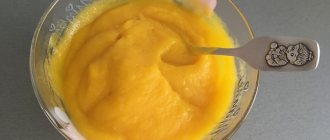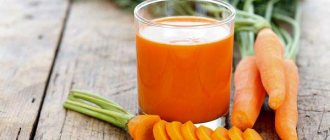Television programs and print publications devoted to healthy eating constantly raise the issue of the dangers of salt. The terrifying name “white death” and a number of terrible diseases for which it is blamed cause reasonable concern among parents and burning questions: “Is it necessary to add salt to a child’s food at all? At what age and how much? Is there an alternative to dangerous salt?
Photo: Depositphotos.com. Author: miskolin.
Lack of salt in the child's body
Experts are unanimous in their opinion that with proper breastfeeding or artificial feeding and timely introduction of complementary foods, the child’s body does not experience sodium deficiency until the age of 1.5 years. But there are conditions and diseases that lead to rapid loss of the sodium mineral:
- increased sweating due to being in a hot climate;
- vomit;
- diarrhea;
- taking diuretics;
- cystic fibrosis;
- dysfunction of the adrenal glands.
Externally, signs of salt deficiency appear in the form of lethargy, decreased blood pressure, muscle pain and cramps.
Benefit
The categorical and sometimes mutually exclusive arguments of scientists about the dangers and benefits of salt are confusing. But there is a general opinion - not a single human organism, including children, can live without salt.
Sodium chloride supplies the body with two minerals: sodium and chlorine, each of which has its own important mission.
Chlorine:
- participates in the production of hydrochloric acid, as the main component of gastric juice;
- promotes the breakdown of fats and complex carbohydrates;
- rids the body of toxic substances, thereby helping the liver function;
- maintains a constant acid-base balance and osmotic pressure.
The main source of chlorine is salt, which provides 90% of human needs for this macronutrient.
Sodium:
- regulates water-salt metabolism;
- participates in the formation and transmission of nerve impulses, muscle contraction;
- promotes the transfer of carbohydrates and amino acids across cell membranes;
- increases the excretory function of the kidneys and the activity of pancreatic enzymes;
- prevents dehydration.
Sodium is present in small quantities in milk, beets, celery, eggs, spinach, and raisins. But most comes from mass-produced foods and salt.
Benefits and harms for children
From birth, a baby has the ability to recognize the shades of breast milk. With complementary feeding, the child increasingly enriches his range of tastes and learns the difference between sweet and salty. Why does familiarity with a new taste of food push a baby to refuse food? When foods are regularly sweetened or added salt, it becomes addictive.
Sugar
Sugar is what people call sucrose in everyday life. Belongs to carbohydrates that provide the body with the necessary energy. Once in the digestive system, it is broken down into fructose and glucose, then sent to the blood and brain. In the blood, glucose stimulates the production of the pancreatic hormone insulin.
The body replenishes more than half of its energy expenditure through glucose, and excess components are stored in adipose tissue. When sugar is consumed in limited quantities, it is beneficial for the body because:
- is an easily digestible source of energy;
- activates the brain and speeds up information processing time;
- has a beneficial effect on the functioning of the liver, muscles, and heart.
Children should be given glucose rather than refined sugar. Negative consequences of consuming refined sugar:
- tooth enamel deteriorates, which leads to caries;
- the feeling of fullness from sweetened food comes faster;
- leads to obesity, diseases of the nervous system;
- causes addiction, addiction to sweets.
Salt is a food product that is a compound of sodium chloride. It contains substances necessary for the body. Blood, saliva, tears - any liquid in our body contains salt. Sodium ions are present in muscle fibers and transmit nerve impulses. Chlorine helps produce hydrochloric acid in the stomach.
In a child’s body, salt plays the following role:
- sodium and chlorine transport oxygen and nutrients to cells;
- participates in metabolic processes;
- stabilize blood pressure;
- maintains water balance in the body;
- ensures the functioning of muscle tissue and nerve impulses.
A child needs a very small amount of salt so as not to spoil the taste of the food.
Children can have a small amount of salt. Excessive consumption leads to sad consequences. The main problems associated with excess salt intake are:
- blood pressure increases, the functioning of the cardiovascular system is disrupted;
- promotes the removal of calcium from the body;
- disrupts the functioning of the kidneys and pancreas;
- salt deposition occurs in bone tissue;
- causes kidney and liver diseases.
Can I give it up to a year?
For normal development and growth, a small child needs salt in the first year of life.
- Infants receive it from mother's milk, which fully satisfies the daily requirement. Breast milk contains 7 mmol/l sodium, while cow milk exceeds this figure by almost 4 times (24-25 mmol/l).
- The need for salt during artificial feeding is compensated by its presence in infant formula, taking into account age-related needs.
- As the baby grows, complementary foods appear in the baby's diet. Store-bought canned vegetable and fruit purees, porridges, and meat variations do not have a distinct taste. And the reason is that responsible manufacturers, following the requirements of nutritionists, do not add salt to their products.
It is not recommended to salt baby dishes prepared for a baby in his first year of life, even at home. Insipid and inedible, according to parents, they are accepted with pleasure by the child, whose taste buds are “not spoiled” by salty food.
An authoritative foreign expert in the field of baby nutrition, Ruth Yaron, believes that salt transforms the taste of food, so parents should not accustom their baby to it.
A salt-free diet during the first year of life does not mean that the child receives absolutely no sodium. It is included in vegetables, fruits, cereals, dairy products, and there is simply no need for additional sodium chloride in the diet.
Sugar in baby food
The sugar requirement for a child under one year of age is only 4 g (slightly less than a teaspoon). Babies up to 4-6 months receive easily digestible sugars from mother's milk or formula. From the moment complementary foods are introduced, natural sugars from vegetables and fruits and juices are added.
It is advisable to add refined white sugar to food for children after one year, in an amount of no more than 6 g per day (a full teaspoon). Use it to sweeten sour fruit drinks, when baking fruit, in desserts or baked goods.
Introducing sugar too early or too much into a child’s diet leads to a number of problems:
- fermentation processes in the intestines intensify, which provokes bloating and painful colic. Products of incomplete protein breakdown from the intestine are absorbed into the blood, thereby causing allergic reactions;
- excess sugar is deposited in fat depots, preconditions appear for the development of obesity, diabetes mellitus and changes in the central nervous system;
- tooth enamel is destroyed;
- interference is created for proper nutrition: sweetened food creates the “illusion” of satiety in the child, therefore, having eaten very little, for example, sweet porridge or cookies, he will refuse the main meal;
- Sugar is addictive in children! No matter how scary it sounds, a similar pattern has already been proven many times: a child, receiving a portion of glucose, experiences an emotional upsurge, he is cheerful and active, but as soon as the blood sugar level drops to normal, lethargy and boredom set in, so the child will begin to ask for food. and then demand sweets.
Materna sugar-free infant formula does not have these disadvantages.
At what age should you add salt to your food?
When can you add salt to your child’s food? In general, from 1-1.5 years (small amount). But the culinary terms “a little bit”, “a pinch”, “at the tip of a knife”, “to taste” are loose concepts and are not acceptable for preparing children's dishes. To avoid mistakes, use a sodium chloride solution:
Dilute 25 g of salt in 100 ml of water and bring to a boil. The solution is filtered through 3 layers of gauze and another 100 ml of water is added. After boiling again, the saline solution is set aside to cool. For 200 g of food add ½ tsp. solution, which corresponds to 0.3 g of salt.
Doctors' opinions
According to Dr. Evgeniy Komarovsky, there is no need to add salt to children's dishes until they are 1.5 years old. The amount supplied with food is sufficient. Children's need for sodium chloride is much less than that of adults. Therefore, it is impossible to add salt to a child’s food according to “adult” tastes. You need to offer your baby under-salted dishes, and not be guided by your own feelings. Larisa Titova, an employee of the Department of Nutrition of Children and Adolescents of the Russian Medical Academy, believes that due to the vulnerability of the child’s not fully formed body and in order to avoid additional stress on the kidneys, baby food products should not be salted until 1 year. Since the necessary dose of chlorine and sodium is contained in sufficient quantities by natural products included in the children's diet.
Types of salt
Today on the shelves you can find a wide range of irreplaceable seasonings. The difference between specimens is noted both in the amount of impurities and in the methods of extraction. Today you can salt your food using any of the following types:
- Stone. This is the most popular variety and is often called table or table variety. It is extracted from natural salt formations.
- Refined. This is processed rock salt that has undergone heat treatment and purification from impurities. Attracts housewives with its snow-white appearance.
- Iodized. This is rock salt enriched with iodine. It is useful for people diagnosed with iodine deficiency.
- Marine. It is obtained by evaporating sea water. Depending on which sea the seasoning was extracted from, it may also contain other minerals: magnesium, iron, calcium, potassium.
Important! The use of an iodized version will help replenish iodine deficiency only when it is seasoned with cold dishes that do not require heat treatment. Otherwise, the iodine will evaporate without entering the body.
Choosing the “right” seasoning
For children, it is acceptable to use regular rock (table) salt. The type enriched with iodine can be used in the preparation of children's dishes only as prescribed by a doctor.
Refined salt is not suitable for baby food, because after heat treatment various substances are added to it to increase the flowability and uniformity of the grains.
Standards for children of different ages
The connection between excessive consumption of salty foods and the development of hypertension, leading to dangerous complications, forces us to constantly reconsider age standards. According to WHO recommendations, in 2013 the norm for adults decreased from 9 to 6 g per day.
The current daily allowances for children of different age groups are as follows:
- up to 6 months – up to 0.2 g;
- from 6 to 12 months – 0.3 g;
- from 1 to 3 years – 0.5 g;
- from 3 to 6 years – 0.5-1 g;
- from 6 to 11 years – 1-3 g;
- over 11 years old – 3-5 years.
You can roughly calculate the amount of salt a child needs per day using the formula: 0.5 g of salt for every 10 kg of weight (taking into account the content in prepared foods).
Should I salt my child’s food: the harmful properties of salt
Should I salt my child's food? In excess, salt can cause irreparable harm to a child's body.
How an excess of salty foods can negatively affect a child’s body:
- Helps remove calcium from the child's body. This significantly reduces the development of bone tissue, weakens and leads to brittleness of bones and teeth, forms an incorrect structure of the child’s skeleton, and increases the risk of bone pathologies and fractures.
- Provokes swelling of soft tissues . The retention of excess fluid in the body leads to an overload in the urinary system.
- Leads to disturbances in the functioning of the heart and vascular system , and an increase in blood pressure.
- Increases the impact on the children's nervous system, increases irritability, and activates anxious behavior in the child.
- It has a negative effect on metabolism, increases appetite and promotes excess food consumption. Increases daily water consumption - provokes a feeling of thirst.
The danger of oversupply
The property of salt to “attract” liquids explains the symptoms of uncontrolled consumption of salty foods by a child. Its excess will be indicated by morning swelling of the eyelids and face. In addition to irritability and moodiness at a younger age, older children will have complaints of headaches.
Increased salt intake leads to an increase in the volume of circulating blood and strain on the heart. The kidneys are unable to remove excess fluid retained by sodium, resulting in less urine production, swelling and increased blood pressure.
Which one to choose?
Far in the past are the Chumatsky routes, along which enterprising Cossacks transported precious cargo from Azov and the Black Sea region to the Kuban, Caucasus, Belgorod, Bryansk. Today, stories about salt riots and hard labor, exorbitant taxes on “white gold” and even wars for salt seem like legends.
A third of all salt produced is used for food. Moreover, there is no shortage both in the quantity of the product and in its range.
Stone
The most popular for cooking and canning, for which it received the name “cooking” or “canteen”. The natural source is salt mines or quarries. Available in different grinds. In addition to Na and Cl, it may contain up to 2% admixtures of other minerals, which explains the grayish tint of the crystals. Rock salt is recommended for children's dishes.
Refined
Snow-white, purified, 100% sodium chloride. Processing under the influence of high temperatures and bleaches actually turns a natural material into an artificial one, flavored with substances to increase flowability and devoid of natural structure. Not recommended for use in baby food.
Iodized
Iodine deficiency is a common phenomenon in nature, affecting areas remote from seas and oceans. In Russia alone there are about 30 iodine-deficient regions. Filling the shortage is possible through food, and the most affordable of them is iodized salt.
It is obtained by adding iodine-containing components (usually potassium iodate) to ordinary salt and consumed in normal dosages. But the rapid evaporation of iodine limits its use to cold or warm dishes. In childhood, it is used only on the recommendation of a pediatrician.
Marine
Production is based on the method of evaporation of sea water. Shades of taste and smell depend on the source of production (the sea), and the composition is variable. In addition to sodium chloride, sea salt also contains other useful elements: calcium, magnesium, iron, potassium, iodine.
To eliminate iodine deficiency conditions, sea salt is of little use for children due to its low iodine content and its rapid evaporation. Appears in children's food only after 5 years.
Pink Himalayan
It is of interest not only because of its pink color, which is unusual for salt, but also because of its unique origin: shifts in the earth’s layers preserved the seas deep in the depths, and volcanic activity has been involved in the formation of salt deposits for hundreds of millions of years.
Pink salt from Pakistan contains 14% admixtures of beneficial minerals and is distinguished by its natural purity and healing power. And although advertising offers contain statements about safety in childhood, there have been no official recommendations from experts yet.
Black Himalayan
Black salt is mined manually in India and Pakistan. It has a rich composition of minerals. Due to the high content of iron and sulfur, it is more likely not black, but brown. It has a specific smell and pungent taste. In addition to cooking, it is widely used for medicinal and cosmetic purposes. Not suitable for preparing children's meals.
How to choose salt to salt your child's food?
Today, there are several types of salt suitable for human consumption. However, not all types of salt are suitable for baby food. What type of salt can be used to salt a child’s food:
- Refined or processed salt. This type of salt is obtained by thermal treatment of sodium chloride. In appearance, it differs from the usual natural state in its bright white color and fine grinding. This is due to the fact that the composition may contain impurities of a bleaching agent, as well as taste bud stimulants. It should be noted that heat treatment reduces the presence of useful microelements in the product.
Refined salt containing chemical additives should be used with caution for baby food for children aged 1 year and older. Not for consumption by children under one year of age.
- Rock salt is a natural product. In addition to sodium and chlorine, it contains a wide range of mineral components: potassium, iodine, selenium and zinc. This type of product consists of large gray-white crystals. It is most suitable for use in baby feeding - food is added with salt after heat treatment.
- Hyponodium medicinal salt - has a reduced formula of sodium ions in its composition. This product should not be given to a child without a doctor’s recommendation.
Which salt should you choose?
- Iodized – salt enriched with iodine. The grinding structure can vary from very fine fractions to large crystals. In baby food, it is used as a supplement to compensate for the lack of iodine in the child’s body.
- Sea salt is obtained by evaporating sea water. Due to its composition, rich in minerals and trace elements, it is the most useful type of sodium chloride. This list includes: iron, magnesium, iodine, potassium and calcium . It must be taken into account that such a product is allowed to be introduced into food for children no earlier than five years of age. Marine minerals are not easily absorbed by children's bodies.
Salty foods are prohibited
Salt is found in excess in many foods. In the food industry, it is indispensable for extending the shelf life and improving the taste characteristics of food that has lost its natural taste due to prolonged heat treatment. There is also a place for tricks - salty food from fast food makes you thirsty and encourages you to buy sparkling water.
Foods with excessive amounts of salt that are dangerous for children include:
- semi-finished products;
- sausages;
- canned meat and fish, pates;
- hard cheeses;
- pickles;
- sauces and ketchups;
- chips, french fries, pizza, breakfast cereal.
There is no point in talking about the amount of salt in herring or balyk, but many people forget about its presence in carbonated drinks, candies, chocolate, and bread.
Prepared foods and semi-finished products account for up to 80% of the daily sodium chloride requirement. Salt is everywhere and in everything, sometimes in terrifying quantities. There is almost 20 times more of it in hard cheese than in homemade cottage cheese; in sausages - almost 25 times more than in meat; in canned vegetables – 7-10 times more than in fresh ones.
In the list of foods prohibited by salt content, attentive parents will find the same harmful substances that should absolutely not be given to children under 3 years of age.
- Canned food (fish, meat, vegetables) and smoked sausages are not recommended on the menu for children under 7 years of age.
- There is no approval from nutritionists regarding the inclusion of boiled varieties of sausages and frankfurters in a child’s diet. Even the indication “for baby food” does not exclude a high content of salt and food additives in the product.
- After 1-1.5 years, the child can be offered a “transparent” piece of 17-20% hard cheese - unsalted, mild and low-fat. Smoked, melted, brine varieties and varieties with mold should be discarded.
- Regarding herring, doctors agree that it is better to give it after 2-3 years and no more than 1 piece 1-2 times a week. Even lightly salted fish must first be soaked in milk.
- Convenience foods, snacks, fast food dishes, sauces, mayonnaise, ketchup, carbonated drinks are prohibited for children of any age, and they will not bring any benefit to adults - only harm.
Prohibited salty foods
Modern industry uses salt as an essential flavor enhancer and preservative. Today it is difficult to find absolutely bland goods on store shelves. White seasoning significantly increases the shelf life of the product and causes a taste addiction, which makes the consumer want to eat this product again and again.
Child and fast food
Having decided the question of at what age can a child sometimes salt their food, parents forget about ready-made products that initially contain an unacceptable amount of seasoning.
Every adult should know the list of foods that should not be fed to children:
- canned vegetables;
- sausages;
- fast food (chips, crackers, hamburgers, french fries, pizza);
- popular sauces (ketchup, mayonnaise);
- semi-finished products.
According to pediatricians, the later a child tries foods that are harmful to him, the better.
Refuses unsalted food - what to do?
Refusal of unsalted puree does not mean that the child does not like such food. It is possible that after 2-3 visits the result will be positive. You can add a little breast milk or baby formula to the proposed dish so that the taste of the new product is more reminiscent of the usual food. Sometimes a baby’s refusal is caused by a reluctance to eat puree from a certain vegetable. For example, preference is given to broccoli over zucchini.
Problems also arise with the introduction of meat puree into complementary foods. As a result of industrial preparation, it significantly loses its taste, according to adults. There is no need to rush adding salt. Patient use of well-known “tricks” (adding breast milk, a small amount of your favorite vegetable mixtures, and from 9 months - greens) will help to avoid problems with eating disorders and its impact on the child’s health in the future.
Eating a lot of salt - what's the reason?
If, on the contrary, the child eats a lot of salt, the reasons may be different. In the last decade, a breakthrough has been made in the study of the formation of taste behavior in children. Scientists have concluded that taste preferences in childhood, and then in adulthood, depend on the following factors:
- genetic predisposition;
- the nutritional characteristics of a woman during pregnancy;
- national traditions.
Strictness for a child’s excessive passion for salt will not bring results. A tactful and gentle influence on his taste preferences will help to quickly cope with the problem:
- preparing under-salted food for the whole family;
- inaccessibility of a salt shaker for a little fidget;
- replacing a harmful product with a healthy alternative according to age: greens, salad dressings, harmless sauces for home-cooked meat and fish dishes.
If a child persistently desires to eat salt in large quantities, it is necessary to consult a pediatrician and an endocrinologist (to rule out diseases of the endocrine system).
Age restrictions
Doctors strongly do not recommend giving sugar to babies in their first year of life. Breasts can get by with milk sugar - lactose from breast milk. And mixtures for artificial drinks are enriched with maltose or lactose. From 6 months, new sources of glucose will appear on the children's menu - fructose, as well as complex carbohydrates in cereals and vegetable purees. Listen to the advice of experts and delay your child’s introduction to sugar as much as possible.
From the age of 3, a child can be offered sweets in the form of marshmallows, marshmallows, vanilla marmalade, low-fat ice cream, cakes and pastries without fatty creams, and it is better if the delicacy is homemade. At this age, the child gets acquainted with honey, starting with 1-2 teaspoons added to any dish.
Due to the high fat content, chocolate is only allowed to be introduced into the diet from the age of 5-6, offering a small amount of white or dairy product, and then black.
A reasonable offer of sweets to your baby involves certain rules: only after the main meal, and in no case as a reward.
Healthy Alternatives
The ability to emphasize or enhance the taste of cooked food is not unique to salt.
- Dill and parsley, dried, frozen or fresh, add a rich taste to children's dishes and are used in cooking from the age of 9 months onwards.
- Spicy herbs have beneficial properties, bright taste and aroma: basil, cumin, rosemary can be gradually added to a child’s food from 1.5 years old.
- Dried, crushed seaweed adds special taste, minerals and vitamins to children's dishes; is introduced into the menu carefully due to possible allergic manifestations from 2.5-3 years.
- Dressings based on natural cream, kefir, yogurt, sour cream, broth with chopped herbs, crushed garlic or onions for fish, meat, vegetable dishes and salads add an expressive taste and improve appetite. Recommended after 3 years.
The purchase of products for a children's diet should be preceded by a useful habit - familiarization with the composition. Manufacturers list the ingredients in the established order: from largest to smallest. Salt, which occupies one of the first positions on the list (designated as “salt”, “sodium”, “sodium” or “Na”), should alert parents and force them to refuse to purchase.
Is it possible not to add salt to a child’s food: how to replace salt?
There is a method of feeding a child that does not require additional salting of food - the necessary beneficial elements and minerals can be obtained from other foods.
If you don’t add salt to your child’s food, the following are substitutes:
- Fresh or dried herbs: parsley, dill, onion or garlic. This supplement can be given from 9 months. Introduce seasonings into the baby’s diet in small portions before use, to rule out allergic reactions to spices.
- Kefir soups or sauces based on unsweetened yogurt are an excellent salt substitute.
- But basil, lemon juice and cumin can be used as food for children after the age of two.
- replenish the lack of sodium in a child’s body: chicory, beef, tomatoes, cheese, rye bread and beets.










